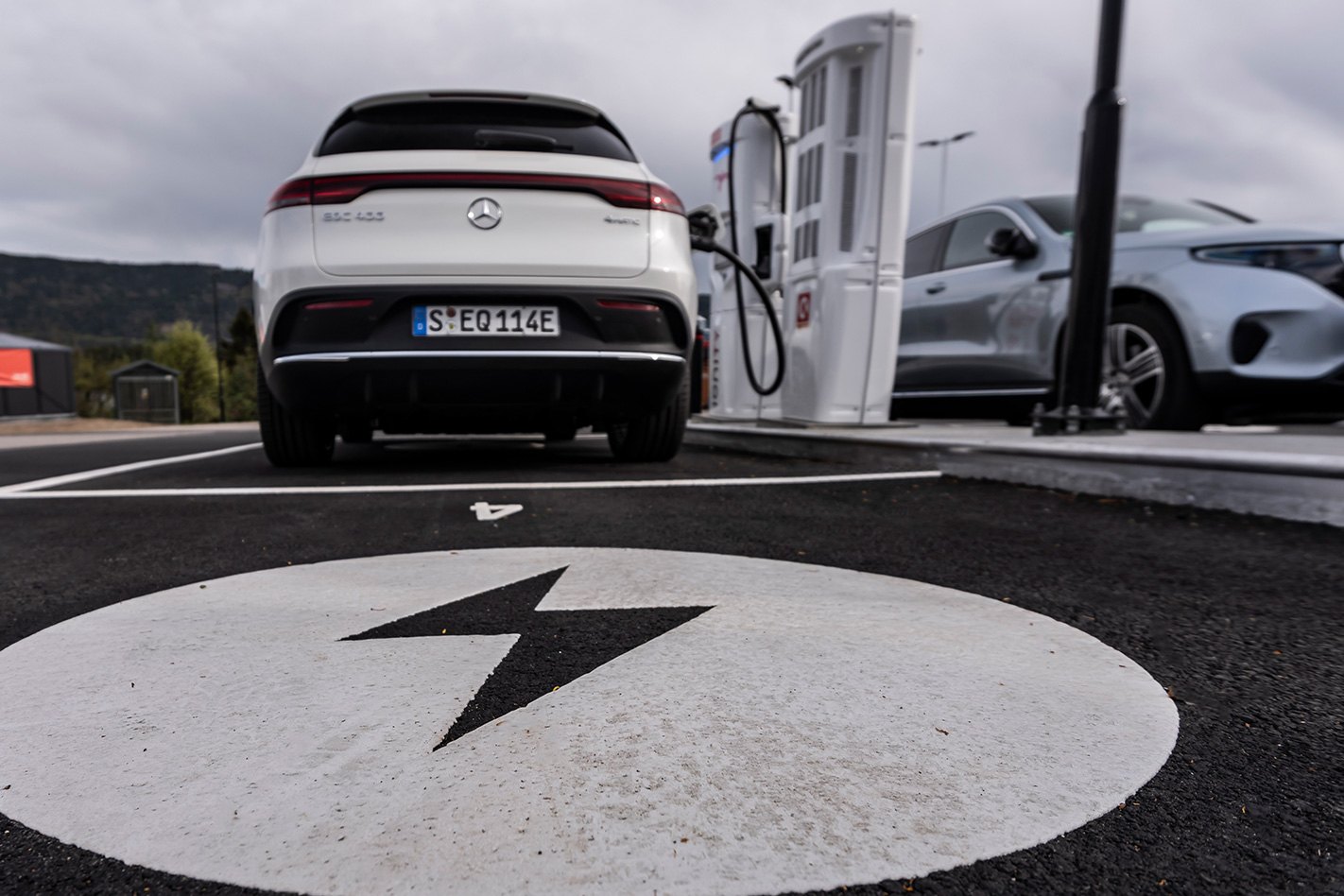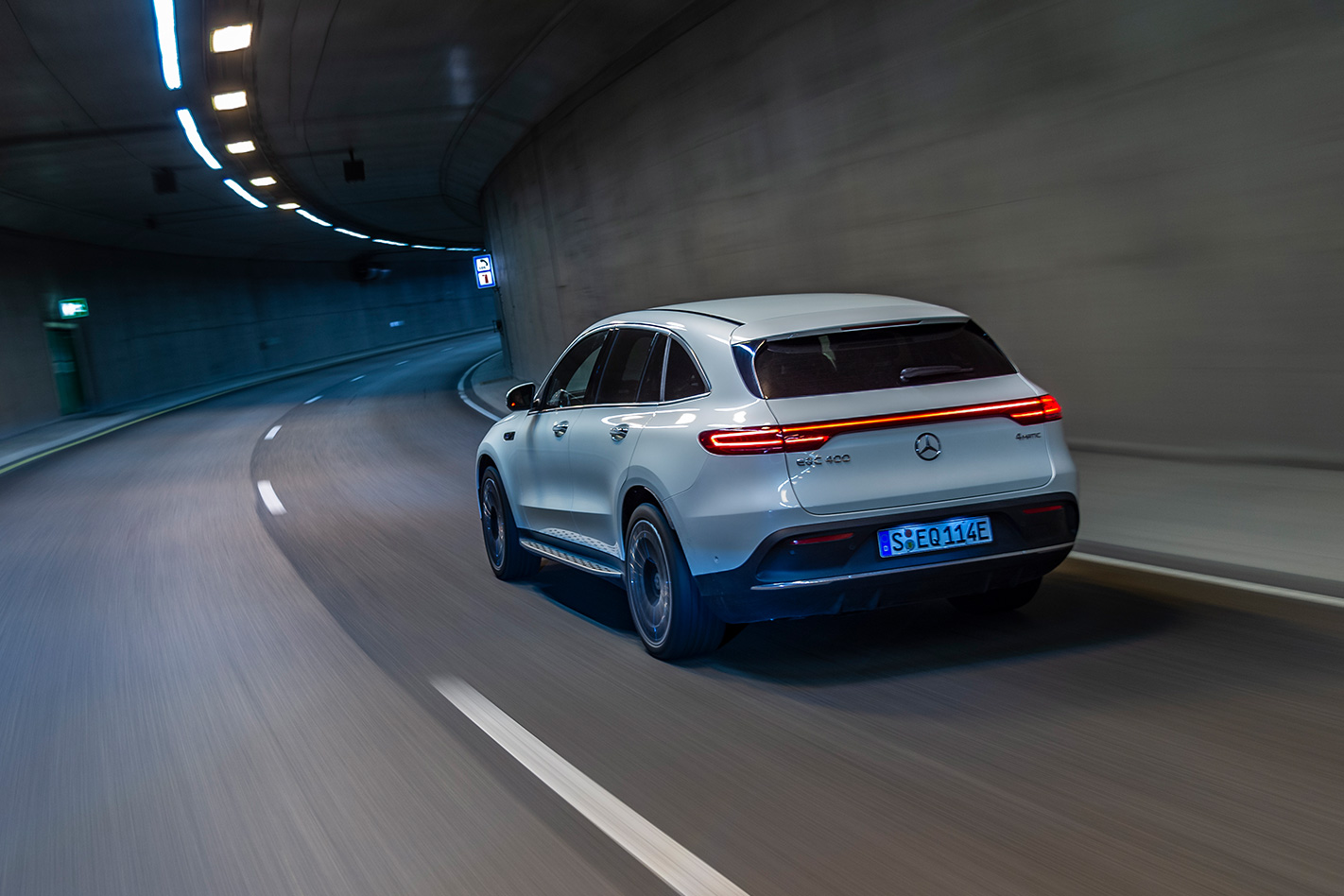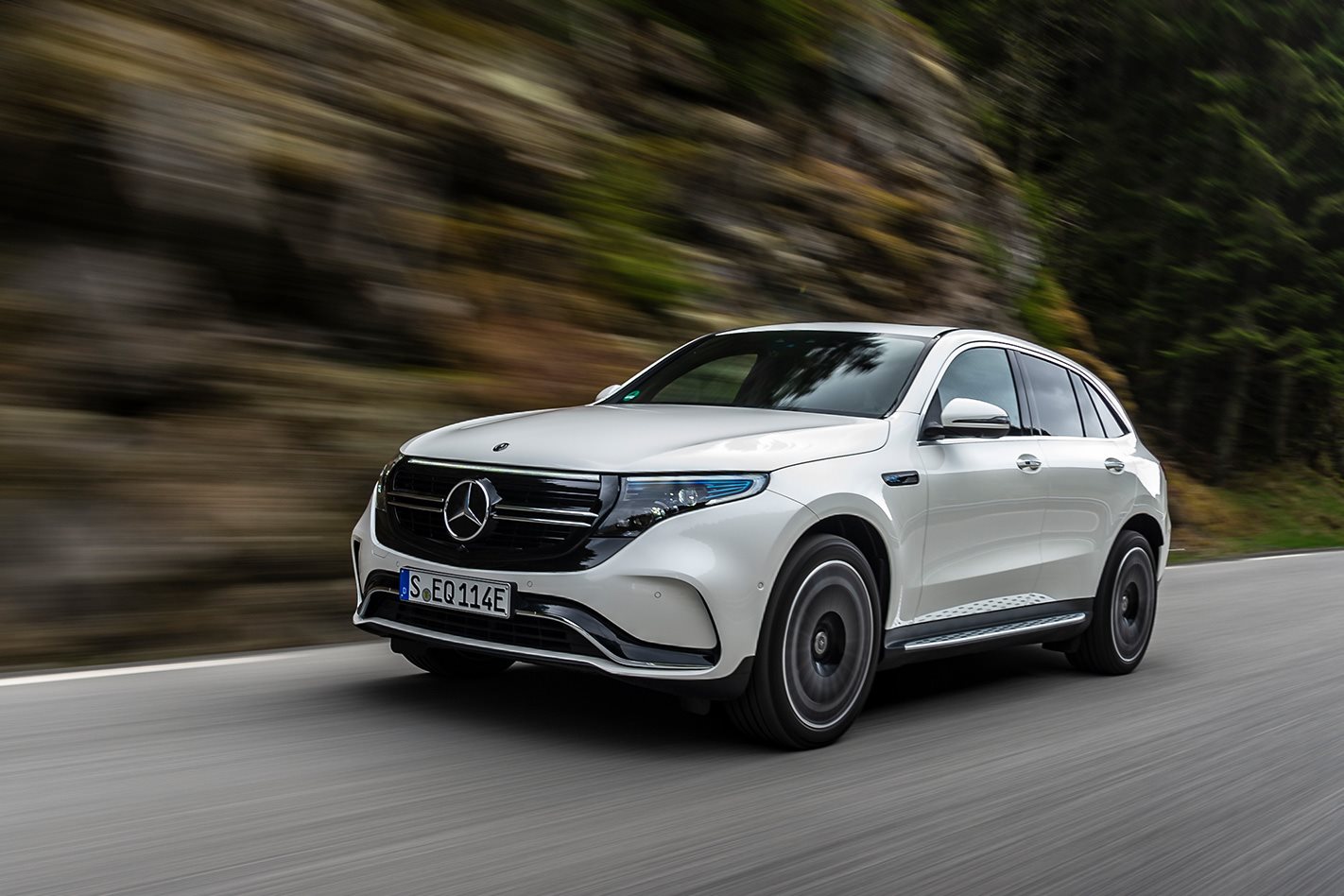Overall Rating

5 0 5
Plus & Minus

WHAT IS THE MERCEDES-BENZ EQC?
It’s significant, that’s what. Like many car markers, Mercedes is betting heavily on an electrified future (it will launch 10 new EVs by the end of 2022, at a cost of 10 billion euros) and this mid-size SUV, dubbed EQC, is the brand’s first salvo.
WHY WE’RE TESTING IT
Because it’s our first taste of what we can expect from the world’s oldest car brand as it embarks on a journey to transition from conventionally powered vehicles to those propelled by electrons.

MERCEDES-BENZ EQC REVIEW
Yep, it’s another electric SUV. Getting quite popular now aren’t they? Though this one carries special significance. It’s the first model in an ambitious plan from Mercedes-Benz to launch 10 new EVs by the end of 2022 (three will be from Smart), at a cost of 10 billion euros. That’s billion, with a B.
By that measure, this SUV promises to be the most significant new Mercedes of the year. Hell, maybe even the next decade.
Dubbed EQC, this is our first chance to see what the world’s oldest car maker has in store for us as it squares up to take on Tesla and the growing hoard of similarly timed EV rivals from Jaguar, Audi and BMW.
First impressions? It’s all very familiar. Parked in front of our hotel in Oslo, Norway, its sleek proportions are hauntingly similar to Merc’s existing mid-size SUV, the GLC. Only the blacked out grille and the aero wheel design hint at the gravitas at play here.

This is quite intentional. Unlike the radically styled Jaguar I-Pace and Tesla Model X, the EQC isn’t a ‘new from the ground up’ design. It shares much of its core DNA with the GLC, including its suspension hard points and 2873mm wheelbase. The two are even made in the same factory, on the same line, which gives Merc the freedom to scale EQC production up or down depending on demand. Clever, right?
Mercedes Australia isn’t talking exact pricing yet, though it does hint the sticker should be around $140,000 when it arrives Down Under in October this year. That’s about $20K more than an equivalent I-Pace or Model X, though the Benz is more powerful than both. Combining an 80kWh battery with twin electric motors (one for each axle) results in outputs of 300kW and 760Nm, which sounds ample.
“But it probably weighs more than moon!” I can hear you thinking. Battery packs are heavy (652kg in this case), so it’s true that the EQC hits the scales at a rather portly 2454kg. It hides its mass well, however.
Prod the throttle and the rate of acceleration is ferocious. In fact, so sharp off the mark is the EQC that it can nip into gaps in traffic that no conventionally powered SUV could manage. How could it, with its comparatively glacial throttle response and time sapping gearbox? Officially, Benz claims the EQC will hit 0-100km/h in 5.1sec, though it feels faster than that. This is real ‘push you into your seat’ kind of stuff.

It’s no sports car, however. Unusually, suspension is a combination of conventional coil springs up front and air suspension out back (there are no adaptive dampers) and the set-up is biased towards comfort. I can’t recall having driven a softer Mercedes this side of an S-Class, so supple is the ride quality, even on standard 20-inch wheels. Australia’s love of all things sporty means that our EQCs will arrive with the optional AMG Line styling pack as standard, and customers will have the chance to choose larger (and handsome) multi-spoke 21-inch hoops, but even here, the ride is relaxed and well controlled. Admittedly this was on very well maintained Norwegian roads, though this focus on comfort should hold the EQC in good stead for Australia’s gnarlier tarmac.
The trade off to this waftiness is that the EQC never feels as agile or as nimble as a Jaguar I-Pace, which is also some 362kg lighter. The Benz is more of a polished cruiser than apex hunter, which is a character trait only enhanced by steering that’s mute and remote.
There are five drive modes to play with (Eco, Comfort, Sport, Individual, Max Range), and switching to Sport does add heft to the helm, though it’s still lacking in feel. There’s no criticising the steering’s weight or its accuracy, however.

Perhaps the most engaging thing about the steering is found on the wheel itself. Traditional paddle shifters remain, but with no gears to cycle through, their task is to moderate the level of resistance from the regenerative braking. Again, there are five settings to play with: D auto, D+ (for coasting), D low, D medium (about 30-35 percent regen) and D high (75-80 percent regen), which Benz says offers one-pedal driving. It’s wonderfully intuitive to use, with noticeable step-changes between each of the settings.
Range wise, the EQC is officially in the same ballpark as its rivals with a claim of between 374-417km on the WLTP cycle. And if you have access to a 100kW DC charger, you can juice it up from 10-85 percent capacity in 40 minutes. Fit an AC wallbox at home and a full charge will take around 11 hours.
During our drive route in Norway, our consumption hovered around 24kWh/100km, suggesting a real world range of around 340km.
And unlike our experience with the I-Pace, the EQC’s predictive range software is unwaveringly accurate, seeing us arrive at our destination with the prescribed amount of charge remaining, rather than sweating bullets as our battery capacity dropped at an alarming rate.

That Max Range driving mode I mentioned earlier is interesting. If you accidentally miss a charging point, or find your predicted range coming up short of your destination, activating the mode deploys a host of measures to eke out additional kms. The most obvious change is felt through the throttle pedal, where haptic feedback is used to limit your speed to a pace the car determines will help you reach your destination.
In fact, most of the EQC’s support systems are genuinely worthwhile. Owners can use an app on their smartphone to precondition the car, check vital charging information, and set their route in the sat-nav. The software for the navigation is particularly clever. Rather than simply choosing the shortest route, it takes into account how much battery you have, the availability of chargers and recharging times along the way, and even the weather and topography to determine the best compromise between time and convenience.
The cabin is a highlight. If the EQC’s exterior styling is slightly derivative, things are more radical inside thanks to an all-new dash design, square air vents with rose gold detailing, and the inclusion of Merc’s twin 12.3-inch screen digital display. It’s a luxurious place to sit and, as you’d expect, it’s eerily quiet too. Even with no combustion engine to disturb the peace, Merc’s engineers have been fastidious in their mission to find and eliminate NVH pathways.

A two-layer system of rubber bushings is used to isolate the twin-electric motors from the sub-frame and then the sub-frame to the vehicle, for example. And the wheel arches are lined with an acoustic shroud that cuts rolling noise by 7dB.
Some road and wind noise is still noticeable, as is some muted whining from the electric motors, though the EQC is nicely refined.
Rear seat passengers aren’t forgotten either. Space in the second row is comparable to a GLC, with ample knee and headroom and cushions that deliver decent under-thigh support and a natural backrest angle. Visibility for kiddies is useful thanks to a low window line and there are twin rear air-vents, dual USB ports, a 12V socket and two cup holders.
In fact, the rear-seat packaging is superior to what you get in the Jaguar I-Pace, which is interesting given the Jag’s bespoke platform. And it’s here that we get to something of an EQC compromise. While the decision to share its platform with existing cars like the GLC and C-Class is a smart one as it offers a degree of production flexibility, it also means Mercedes hasn’t been able to fully exploit the packaging freedoms that an EV powertrain offers. There’s no frunk, for example, and the cabin space, while good, is no better than a conventionally-powered GLC. In fact, the 500L boot is marginally smaller.

But there’s no escaping that the EQC is a convincing and remarkably polished first salvo for Benz’s burgeoning EQ brand. Cabin refinement and comfort are highlights, as is the neck-snapping acceleration, but perhaps its biggest strength is its familiarity. This isn’t an outlandish SUV that requires vast degrees of readjustment. Will that conservatism and the familiar looks disappoint some people? Possibly. But for the vast majority of wealthy Mercedes fans looking to embrace zero emissions, it’s likely to hit the sweet spot.
MERCEDES-BENZ EQC PRICE AND SPECS AUSTRALIA
Model: Mercedes-Benz EQC 400
Motor: 2 x asynchronous motors, 80kWh lithium-ion battery
Max power: 300kW
Max torque: 760Nm @ 0rpm
Transmission: Single-speed reduction gear
Weight: 2495kg
0-100km/h: 5.1sec (claimed)
Economy: 20.8-19.7kWh/100km
Price: $140,000 (estimated)
On sale: October 2019






